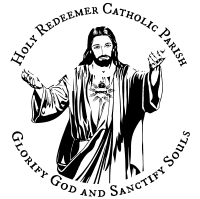The Eucharist, Part 17
Jesus Christ: Yesterday, Today, and Forever ~
Today we continue our twenty part series on the Eucharist. In case you missed the first three, you can find them here. This is in keeping with Archbishop Etienne’s pastoral letter on the Eucharist that you can find here (in case you missed it). Enjoy.
May God Bless You,
Fr. Thomas Nathe
Trent Horn, 20 Answers – The Eucharist. Catholic Answers Press. 2015
Get your own copy from Catholic.com
Question #17:
What did the Second Vatican Council teach about the Eucharist?
The Mass and the sacrament of the Eucharist are discussed throughout the documents of the Second Vatican Council. For example, the Constitution on the Sacred Liturgy, Sacrosanctum Concilium, teaches that the Eucharist holds a central place in the life of the Church. It says:
The liturgy is the summit toward which the activity of the Church is directed; at the same time it is the font from which all her power flows. For the aim and object of apostolic works is that all who are made sons of God by faith and baptism should come together to praise God in the midst of his Church, to take part in the sacrifice, and to eat the Lord’s supper.
The Decree on the Ministry and Life of Priests, or Presbyterorum Ordinis, also testifies to the uniqueness and centrality of this sacrament. It says:
The other sacraments, as well as with every ministry of the Church and every work of the apostolate, are tied together with the Eucharist and are directed toward it. The most Blessed Eucharist contains the entire spiritual boon of the Church, that is, Christ himself, our Pasch and Living Bread, by the action the Holy Spirit through his very flesh vital and vitalizing, giving life to men who are thus invited and encouraged to offer themselves, their labors and all created things, together with him.
If the Eucharist holds such a central place in the life of the Church, and the Eucharist can exist only when bread and wine are consecrated by a priest with valid holy orders, then it logically follows that the mission of the priest is also central to the life of the Church. Ad Gentes, the Decree on the Missionary Activity of the Church, puts it this way: “By means of their own ministry - which consists principally in the Eucharist which perfects the Church - they are in communion with Christ the Head and are leading others to this communion.”
One mistaken idea that arose after the council was that Christ is equally present in the Word or even in the people at Mass and in the Eucharist, thus, just as we don’t genuflect before our fellow brothers and sisters at Mass, there is no need to genuflect before the tabernacle that contains the Eucharist. This erroneous belief may be one of the reasons Pope Paul VI issued the encyclical Mysterium Fidei during the council. It rebukes this teaching in the following passage:
These various ways in which Christ is present fill the mind with astonishment and offer the Church a mystery for her contemplation. But there is another way in which Christ is present in his Church, a way that surpasses all the others. It is his presence in the Sacrament of the Eucharist, which is, for this reason, “a more consoling source of devotion, a lovelier object of contemplation and holier in what it contains” than all the other sacraments; for it contains Christ himself and it is “a kind of consummation of the spiritual life, and in a sense the goal of all the sacraments.” This presence is called “real” not to exclude the idea that the others are “real” too, but rather to indicate presence par excellence, because it is substantial and through it Christ becomes present whole and entire, God and man.

